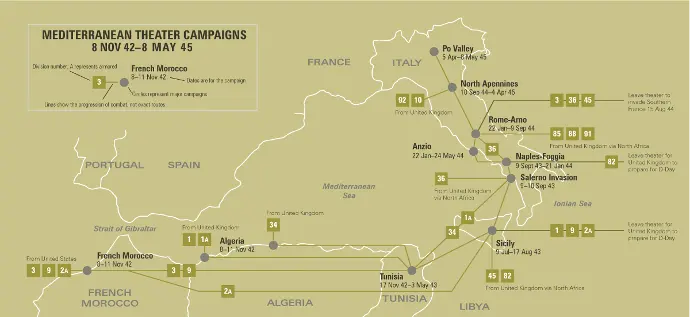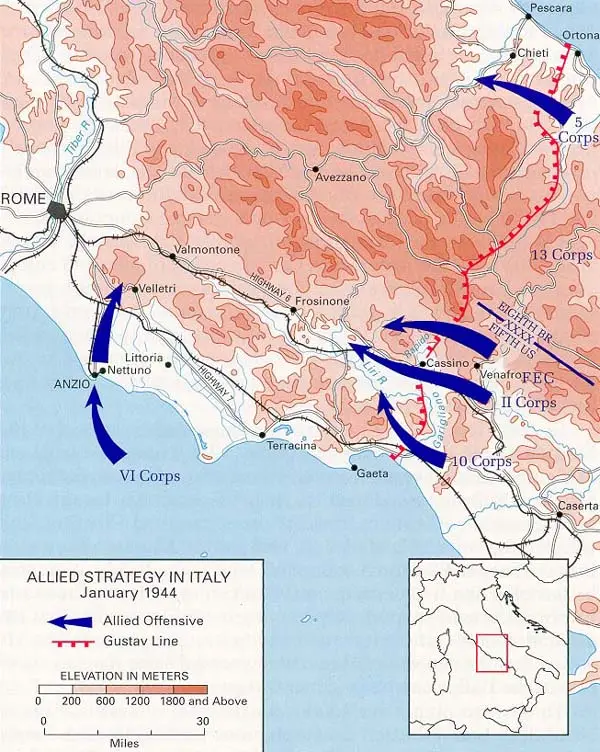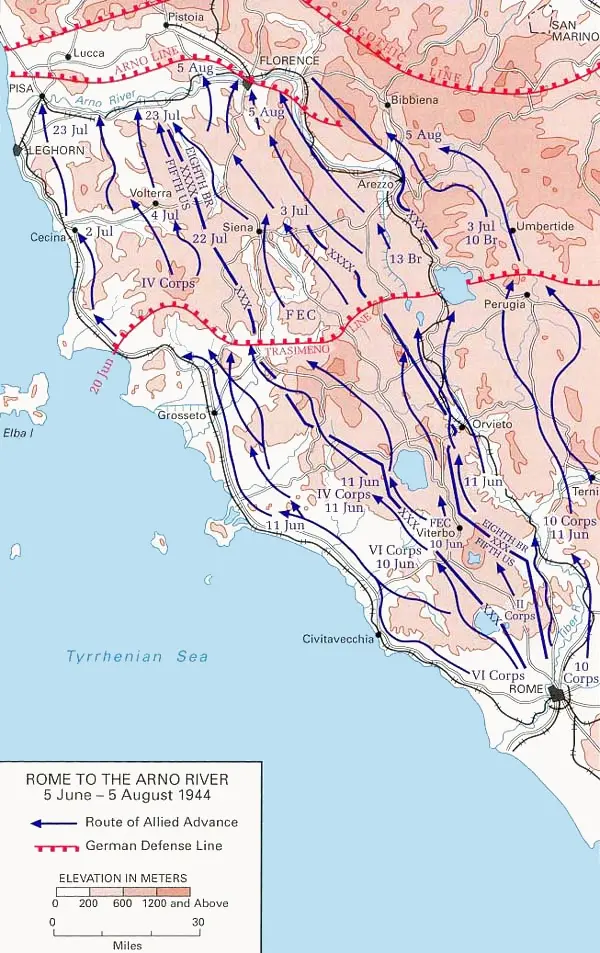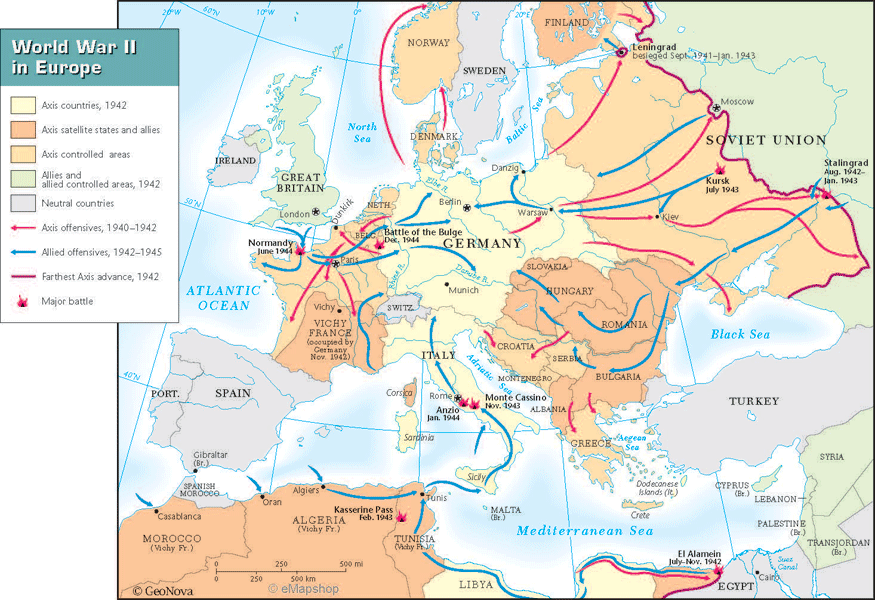Sam Crick Coulson
Military
Orders
- Enlisted: Dec 22, 1942 at Ft Oglethorpe, GA
- Service Outside US
- Discharged (Separation Center, Camp Atterbury, IN): Nov 3, 1945
MOS
Awards/Medals
- European-African-Middle Eastern (EAME) Theater Ribbon with 5 Bronze Stars
- Good Conduct Ribbon
Campaigns
- Rome-Arno - Jan - Sep 1944
- Southern France - Aug - Sep 1944
- North Apennines Sep 1944 - Apr 1945
- Rhineland Sep 1944 - Apr 1945
- Po Valley - April - May 1945
Info from discharge papers and AI inquiries
- Date: July 9, 1943 - August 17, 1943
- Location: Italy (specifically, the island of Sicily)
- Participants:
- Axis powers (including Fascist Italy and Nazi Germany)
- United Kingdom
- United States
- Key People:
- Omar Bradley
- Albert Kesselring
"WD GO#133/45" likely refers to a War Department General Order issued in 1945. During World War II, the United States War Department issued numerous general orders to communicate directives, regulations, and other important information within the military.
Without more specific information about the content of WD GO#133/45, such as its title or subject matter, it's difficult to provide further details. If you have a specific question about this general order or need information on a related topic, please feel free to ask!
Island Base Station WW2
During World War II, the Allied forces carried out a significant campaign known as the Allied invasion of Sicily, also referred to as Operation Husky. This operation involved the invasion of the Italian island of Sicily by Allied troops. Let’s delve into the details:
The conquest of Sicily took a little more than a month, and it had significant consequences:
- Fall of Italian Dictator Benito Mussolini: The invasion directly led to the fall of Italian dictator Benito Mussolini.
- Italian Government Surrender: The Italian government surrendered to the Allies.
Why Sicily? Three key considerations influenced the decision to attack Italy via Sicily:
- Flagging Morale: The morale of the Italian people was waning, making it a strategic target.
- Clearing the Mediterranean: Controlling Sicily would shorten the distance for convoy shipments to Allied bases in North Africa.
- German Supply Lines: German supply lines to Italy were long and vulnerable, unlike those to potential invasion points in western France, the Netherlands, and Belgium.
The reduction of Pantelleria, a rocky isle measuring about 32 square miles (83 square km), was the first step in clearing the Mediterranean. It was studded with heavy coastal guns and g
Rome-Arno, Apennines, Po valley World War 2 campaigns
The Rome-Arno Campaign, part of World War II, was a series of battles fought between Allied and Axis forces in Italy from January 1944 to June 1944. The campaign aimed to push the Axis powers, particularly Nazi Germany, out of Italy and to capture Rome.
The Apennine Mountains, stretching along the length of Italy, presented a significant geographic obstacle during the Rome-Arno Campaign. The Allied forces, primarily composed of American, British, and Canadian troops, faced challenges in navigating the rugged terrain and adverse weather conditions.
The Po Valley Campaign followed the Rome-Arno Campaign and took place from April 1945 to May 1945. This campaign involved the final push by Allied forces to defeat German forces in Italy. The Po Valley, located in northern Italy, was a crucial region in this campaign, as it was one of the last areas where Axis forces made a stand before the German surrender in Italy on May 2, 1945.
During these campaigns, Allied forces faced determined resistance from Axis forces, including German and Italian troops, as well as difficult terrain and harsh weather conditions. However, through a combination of strategic planning, superior firepower, and relentless pressure, the Allied forces were able to achieve their objectives and secure victory in Italy by mid-1945. These campaigns played a significant role in the overall Allied effort to defeat Nazi Germany in World War II.
What army units participated in Rome-Arno, Apennines, Po Valley Campaigns?
During the Rome-Arno, Apennines, and Po Valley Campaigns of World War II, a variety of army units from multiple Allied countries participated. Here are some of the key units involved:
- United States Army:
- Fifth United States Army (Fifth Army) under the command of Lieutenant General Mark W. Clark.
- U.S. II Corps and U.S. IV Corps were major components of the Fifth Army.
- Units such as the 1st Armored Division, 34th Infantry Division, 36th Infantry Division, and 45th Infantry Division were part of the Fifth Army.
- Eighth Army under the command of Lieutenant General Sir Oliver Leese.
- Units like the 1st Canadian Infantry Division, 2nd New Zealand Division, and other British Commonwealth forces were part of the Eighth Army.
- Canadian forces, including the 1st Canadian Infantry Division, played a significant role as part of the British Eighth Army.
- Polish II Corps under the command of Lieutenant General Władysław Anders.
- The Polish II Corps participated in battles during the Italian Campaign, including the Battle of Monte Cassino.
- Forces from countries like France, Australia, New Zealand, India, and South Africa also participated in various capacities within the Allied command structure.
- German Army units, including the 14th Army and elements of the 10th Army, were key components of the Axis forces defending Italy.
- Italian Army units, both loyal to Mussolini's Fascist regime and those aligned with the Italian Co-Belligerent Army under the Allied command, were also present.
These campaigns involved a complex mix of infantry divisions, armored units, artillery, and support elements from multiple nations, reflecting the multinational nature of the Allied effort in Italy during World War II.

Rome-Arno, Apennines, Po Valley Campaign
The Rome-Arno Campaign, part of World War II, was a series of battles fought between Allied and Axis forces in Italy from January 1944 to June 1944. The campaign aimed to push the Axis powers, particularly Nazi Germany, out of Italy and to capture Rome.
The Apennine Mountains, stretching along the length of Italy, presented a significant geographic obstacle during the Rome-Arno Campaign. The Allied forces, primarily composed of American, British, and Canadian troops, faced challenges in navigating the rugged terrain and adverse weather conditions.
The Po Valley Campaign followed the Rome-Arno Campaign and took place from April 1945 to May 1945. This campaign involved the final push by Allied forces to defeat German forces in Italy. The Po Valley, located in northern Italy, was a crucial region in this campaign, as it was one of the last areas where Axis forces made a stand before the German surrender in Italy on May 2, 1945.
During these campaigns, Allied forces faced determined resistance from Axis forces, including German and Italian troops, as well as difficult terrain and harsh weather conditions. However, through a combination of strategic planning, superior firepower, and relentless pressure, the Allied forces were able to achieve their objectives and secure victory in Italy by mid-1945. These campaigns played a significant role in the overall Allied effort to defeat Nazi Germany in World War II.
Rome-Arno
22 January-9 September 1944
The liberation of Rome was the culmination of an offensive launched in late January 1944 that Allied leaders had hoped would both result in the capture of the Axis capital by 1 February and complete the destruction of the German forces in Italy. Instead, the Allies failed to break through the formidable enemy defenses until late May 1944. Even with Rome in Allied hands, the Italian campaign would last another eleven months until final victory.


Rome to Arno
June-Aug 1944

